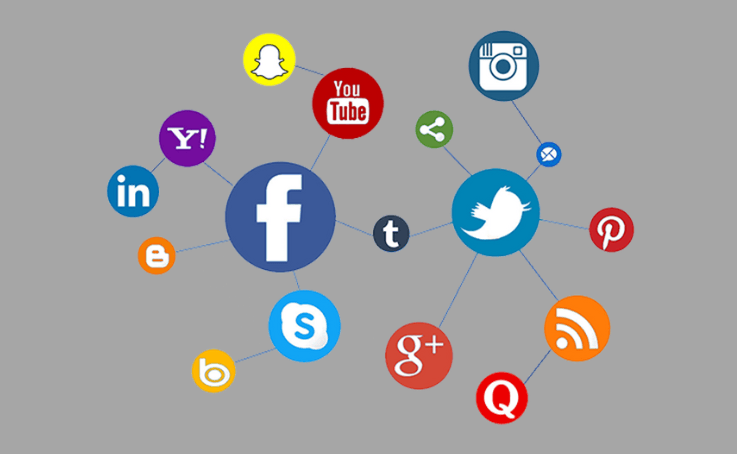
08 Feb Digital Marketing Modules
Modules of Digital Marketing
Digital marketing also can be understand by understanding all Modules of Digital Marketing is a method of promoting products or services using digital technologies, including the internet, mobile phones, display advertising, and any other digital medium. The aim of digital marketing is to reach a target audience through various online channels to drive engagement and conversions. Examples of Modules of Digital Marketing activities include search engine optimization (SEO), social media marketing, email marketing, online advertising (such as display ads and pay-per-click ads), and content marketing.
These are the main Modules of Digital Marketing:
- Search Engine Optimization (SEO)
- Search Engine Marketing (SEM)
- Content Marketing
- Social Media Marketing
- Email Marketing
- Influencer Marketing
- Affiliate Marketing
- Mobile Marketing
- Video Marketing
- Display Advertising
Search Engine Optimization (SEO)
Search Engine Optimization (SEO) is the process of optimizing a website to improve its ranking on search engines like Google, Bing, etc. It involves optimizing various on-page and off-page factors such as keyword research, content creation, technical optimization, backlink building, etc., to make the website more visible and appealing to search engines, with the ultimate goal of improving organic search visibility and driving more traffic to the website.
Search Engine Marketing (SEM)
Search Engine Marketing (SEM) is a form of digital marketing that involves the promotion of websites by increasing their visibility in search engine results pages (SERPs) through paid advertising. It involves bidding on keywords and phrases relevant to a business’s products and services, and placing ads on search engines, such as Google Ads, Bing Ads, etc. The goal of SEM is to drive targeted traffic to a website and increase conversions, sales, and revenue. The cost of SEM varies based on the bidding strategy, competition for keywords, and other factors.
Content Marketing
Content Marketing is a strategic marketing approach focused on creating and distributing valuable, relevant, and consistent content to attract and retain a clearly defined audience — and, ultimately, to drive profitable customer action. This can include blog posts, videos, infographics, case studies, e-books, podcasts, and more. The goal of content marketing is to build a relationship with the target audience, establish brand authority, and drive profitable customer action. The key to successful content marketing is to understand the target audience, their pain points and challenges, and create content that addresses these issues and provides value to the audience.
Social Media Marketing
Social Media Marketing is the process of promoting a product, service, or brand on social media platforms, such as Facebook, Twitter, Instagram, LinkedIn, etc. The goal of social media marketing is to increase brand awareness, drive traffic to a website, build customer loyalty, and ultimately, drive sales and revenue. This can be achieved through a variety of tactics, including creating and sharing high-quality content, running social media ads, engaging with followers, hosting contests and giveaways, and leveraging influencer marketing. The key to successful social media marketing is to have a clear understanding of the target audience, their preferences and behaviors, and to create a consistent and integrated social media presence that resonates with them.
Email Marketing
Email Marketing is a direct digital marketing technique that involves sending emails to a target audience with the goal of promoting a product, service, or brand. The emails can be promotional, informational, or educational in nature and can include text, images, videos, and links. The goal of email marketing is to build a relationship with the target audience, drive traffic to a website, increase brand awareness, and ultimately, drive conversions and sales. To be effective, email marketing campaigns should be well-designed, targeted, and personalized to the recipient’s needs and preferences. Additionally, email marketers should ensure that their emails are delivered to the inbox and are not marked as spam by using best practices for email deliverability.
Influencer Marketing
Influencer Marketing is a form of digital marketing where a brand partners with an individual who has a large following on social media platforms such as Instagram, YouTube, TikTok, etc. The goal of influencer marketing is to reach a wider and more engaged audience through the endorsement and promotion of the brand by the influencer. This can include product reviews, sponsored posts, sponsored stories, etc. The key to successful influencer marketing is to find the right influencer who aligns with the brand’s values and whose followers are relevant to the target audience. The influencer should also have a high level of engagement with their followers, as this can help to increase brand awareness and drive conversions.
Affiliate Marketing
Affiliate Marketing is a performance-based marketing technique where a business partners with affiliates (individuals or companies) to promote its products or services. The affiliates earn a commission for every sale or lead they generate for the business. The affiliates promote the business through various channels, including websites, blogs, social media, email marketing, etc. The goal of affiliate marketing is to drive more sales and revenue for the business and to increase brand awareness. The key to successful affiliate marketing is to find the right affiliates who are a good fit for the brand and to provide them with the necessary tools and support to promote the business effectively. Additionally, businesses should have a clear and transparent commission structure and ensure that their affiliates are complying with all laws and regulations related to advertising and marketing.
Mobile Marketing
Mobile Marketing is a digital marketing approach that targets users on mobile devices, such as smartphones and tablets. The goal of mobile marketing is to reach customers where they are and at the right time, with relevant and personalized messages. This can be achieved through a variety of tactics, including SMS/MMS marketing, mobile apps, mobile websites, mobile advertising, etc. The key to successful mobile marketing is to understand the behaviors and preferences of the target audience, and to create a mobile presence that is optimized for their needs and devices. Additionally, businesses should ensure that their mobile marketing campaigns are designed to drive conversions, whether it be through purchases, sign-ups, or calls to action.
Video Marketing
Video Marketing is a digital marketing approach that involves using videos to promote a product, service, or brand. Videos can be used to educate, entertain, or inform the target audience and can be distributed through a variety of channels, including websites, social media, YouTube, Vimeo, etc. The goal of video marketing is to increase brand awareness, drive traffic to a website, and ultimately, drive conversions and sales. To be effective, videos should be well-produced, engaging, and relevant to the target audience. Additionally, businesses should consider the optimization of videos for search engines, as well as the use of call-to-actions, to drive conversions. Video marketing can be a powerful tool for businesses, as it has been shown to increase engagement, recall, and conversions compared to other forms of digital marketing.
Display Advertising
Display Advertising refers to the use of graphical advertisements that appear on websites, apps, or other digital platforms. The advertisements can be static images, animations, videos, or interactive content, and are typically served to users through an ad network. The goal of display advertising is to increase brand awareness, drive traffic to a website, and ultimately, drive conversions and sales. Display advertising campaigns can be targeted to specific demographics, interests, and behaviors, using data from cookies, device tracking, and other sources. To be effective, display advertisements should be visually appealing, relevant to the target audience, and well-placed on the web page or app. Additionally, businesses should consider the use of tracking and analytics tools to measure the performance of their display advertising campaigns and optimize them for maximum impact.


No Comments